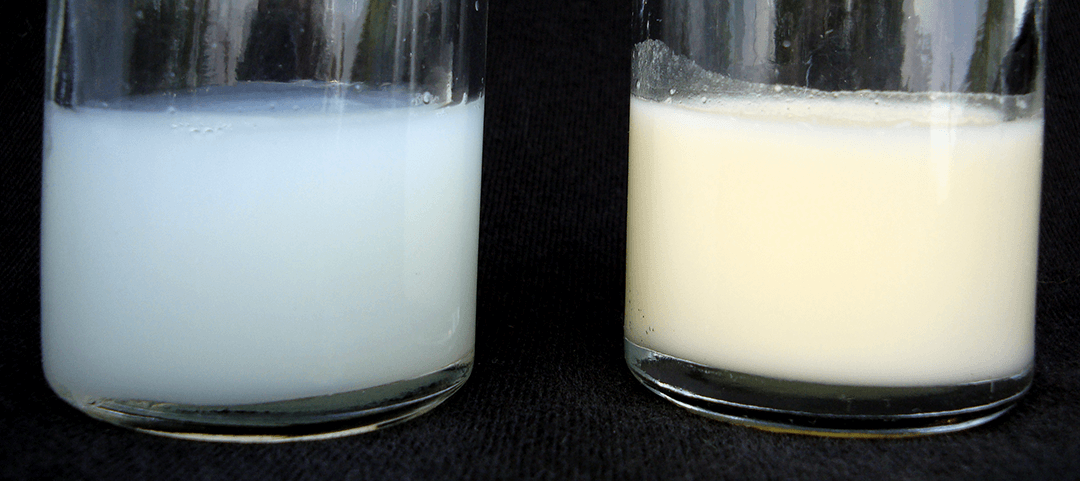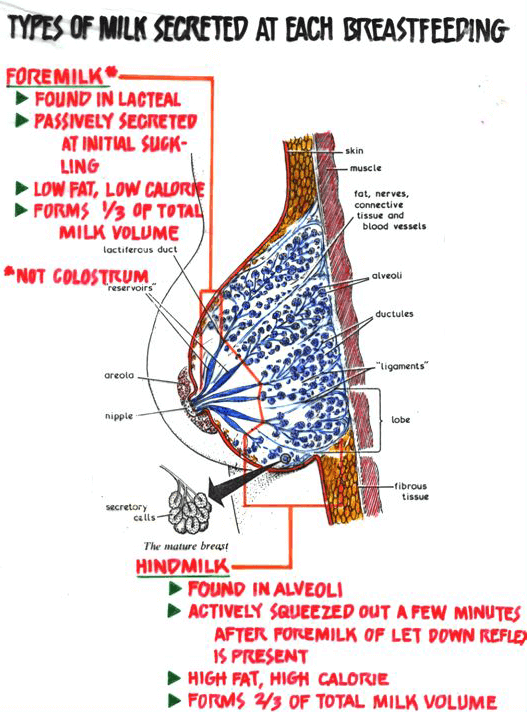Foremilk Hindmilk Imbalance And How To Prevent It
Pediatricians recommend that a mother should breastfeeding at least for the first six months of her baby’s life. If you’re like any other mothers that breastfeed your baby, this is really good news!
Breastfeeding not only can build a stronger bond between a mother and child but it has many others benefits too…
For mother, you will experience lower risk of ovarian cancer, postpartum depression, breast cancer and diabetes.
Breast feeding can lower risk of ovarian cancer, postpartum depression, breast cancer and diabetes. #BreastFeedGoodness
For your baby, she will receive all the good nutrients and also has a lower risk of diseases like diabetes, obesity, asthma and lower respiratory infections.
Breastfed baby will have lower risk of diseases like diabetes, obesity, asthma and lower respiratory infections. #BreastFeedGoodness
While it is natural thinking for all mothers to breastfeed their child but sometime mothers can run into some breastfeeding obstacles like foremilk hindmilk imbalance, which make breast feeding chore very challenging for the both the mother and child. In this article we will look into what is foremilk hindmilk imbalance, how it happen and what can you do to prevent it from happening.

Source: Wikipedia
What Is Foremilk? (Left image)
This is the milk which usually lies at the front of milk-producing cells/alveoli in a breastfeeding mother. It’s the first milk that is sucked by a baby during a normal breastfeeding session.
You can easily identify foremilk by the look of it. It looks watery and is usually bluish in color and quite light in density. The milk is rich in carbohydrates, vitamins and proteins.
It is also rich in lactose, which helps in development of the brain, provides much-needed energy and also quenches thirst.
What Is Hindmilk? (Right image)
This type of milk is found at the back of milk-producing cells of a breastfeeding woman. It has high density and is opaque in color.
Hindmilk is rich in calories and has a very high percentage of fat. The high fat content is due to the fact that it (the fat) tends to stick to the sides and back of alveoli. Hindmilk makes a breastfeeding baby feel full and also facilitates growth.
How Foremilk Hindmilk Imbalance Happen?
- Detail
- Types of milk
When a breastfeeding baby starts suckling on the mother’s breasts, he/she triggers a milk-ejection reflex, which is biologically known as “let down” reflex.
Oxytocin hormone is then released into the mother’s bloodstream, thus resulting in movement of watery milk from ducts to the nipples. At this stage, the moving milk mixes with any that was left over during the last breastfeeding session.
Foremilk hindmilk imbalance is a complication that occurs when milk production is extremely high, thus filling up a breastfeeding baby with foremilk long before the hindmilk gets to the nipples.
When the hindmilk (that is rich in fat) inefficiently mixes with foremilk (which is rich in lactose), the result is production of imperfect milk for the baby.
How To Prevent Foremilk Hindmilk Imbalance
You can prevent this complication by taking one or more of the following measures:
- Establishing a regular and consistent breastfeeding routine. You should consider breastfeeding your baby at regular intervals; e.g. after a specific number of hours. This enables the brain (which produces oxytocin hormone) to properly program itself).
- Changing breastfeeding patterns – Pediatricians recommend to breastfeed from each breast for a separate twelve to twenty-four hours.
- Ensuring that your baby feeds on one breast for long enough before switching him/her to the other breast. Inadvertent switching from one breast to another within short time periods is a bad idea. This will cause you baby to take in more foremilk and can result in lactose overload.
- Increasing the frequency of breastfeeding- this facilitates proper mixing of milk with that which was left over after the last session.
- Breastfeeding from one breast only during every session. If the other one becomes engorged, you can express some of the milk with a breast pump and keep in a container. The expressed milk should then be stored for some time to allow efficient mixing before it’s fed to the baby later on.
If you follow the above recommended tips, you should be able to notice that your baby becomes less fussy and gag less. He/she will have better bowel movement and the stool also becomes more yellow and less watery.
Symptoms Of Foremilk Hindmilk Imbalance
You can identify foremilk hindmilk imbalance by one or more of the following symptoms:
- Green and frothy stool: your baby’s stool changes and becomes green and frothy due to high lactose content.
- Bowel movement that occurs immediately after breastfeeding: this is because the digestive system becomes incapable of efficiently digesting ingested food (milk). Foremilk passes too quickly in your baby guts and does not have adequate time to digest. On the other hand, a proper mix of foremilk and hindmilk will slow down the milk movement and give sufficient time for digestion to get to work.
- Colicky: if your baby affected by this complication may start crying more frequently, clenching fists, tightening stomach muscles, bending legs and arms towards the belly and/or have a swollen tummy. Colic is due to gasses trap in your baby tummy. To test if colic is the culprit, give some gentle pat around the lower part of your baby stomach and hear if there is any “wind”
Here is a video on how to help your baby to release the wind from her tummy…
- Diaper rash caused by acidic stool: a baby may develop rashes because the ingested milk was highly acidic.
- Frequent feeding: Your baby seem like want to breastfeed almost all the time because of ingestion of milk that is watery and has low density.
- Slow weight gain: your baby can suffer with slow weight gain rate because most of the ingested foremilk milk contains little or no fat. Fat is an important ingredient during the growing stage of a baby and it helps your baby to gain weight. When less fat get ingested, thus hammering the weight gain.
- Gassiness: the frequency of passing gas either through the mouth or backside will drastically increase.
- Presence of blood stains in stool due to over stretching in the intestine due to “wind”.
Sharing Is Caring

Like what you read so far? How about help us to spread this AWESOME post to your friend and family? Your shout-out will help to motivate us to create more great posts for you and everyone else. Thanks for your support!
Check out this post for 'Foremilk Hindmilk Imbalance And How To Prevent It.'
3 Myths Concerning Foremilk Hindmilk Imbalance That You Should Know
Myth 1: Too much breastfeeding provides a baby with excess foremilk
Fact: when a baby obtains milk from a breast that is full; the initial milk contains low amounts of calories and fat. As the feeding progresses, concentration of calories and fat gradually increase.
As a matter of fact, too much breastfeeding ensures that a mother’s breasts are well drained, which enables the baby to get properly mixed milk as soon as he/she starts breastfeeding.
Myth 2: A baby experiences slow weight gain because of consuming insufficient hindmilk and excess of foremilk
Fact: generally, a baby who doesn’t get enough breast milk puts on weight at a very slow rate. On the other hand, a baby who is well breastfed (in terms of length and number of sessions) gains weight at the right pace because he/she gets the right mix and quantity of hindmilk and foremilk.
Myth 3: A baby who consumes excess foremilk is generally unsettled and produces green feces and too much gas
Fact: concentration of lactose from the beginning to the end of each breastfeeding session hardly changes. Therefore, it (concentration) is almost similar in both hindmilk and foremilk.
In the event of foremilk hindmilk imbalance, a baby may consume too much watery milk, thus making him/her exhibit symptoms of lactose over load (such as unsettled behavior, enhanced frequency of crying and production of green-frothy feces).
According to the lactose-overload theory, a baby who consumes too much breast milk strains her digestive system with excess lactose. The remaining fraction (of lactose) is then broken down by bacteria found in the gut, thus resulting in "bloating" and other symptoms mentioned in the paragraph above.



